Got Three Minutes?
Here’s a quick check to ensure your next ride is truly a great ride.
By Bill Andrews
“What a day for a ride” you think to yourself.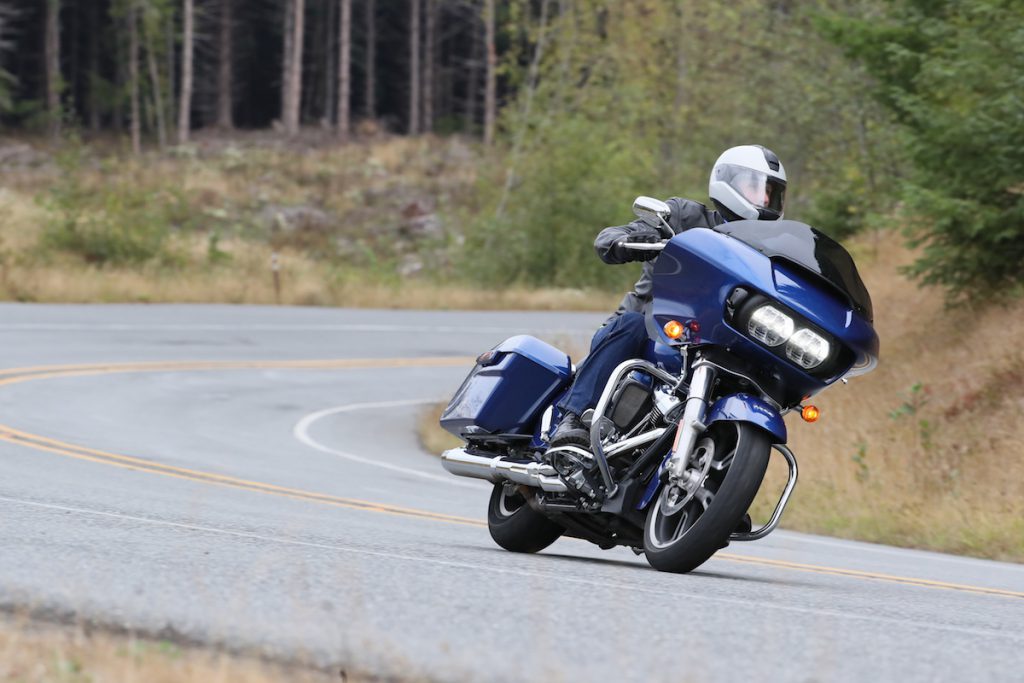
What you should be thinking, though, is “Is my ride ready for the day?”
It’s a valid question, no matter how often or infrequent you ride. Either on-the-road usage and vibration or in-the-garage inactivity can take their toll on your bike, potentially degrading safety, control, performance and comfort.
That’s why the Motorcycle Safety Foundation recommends a short pre-ride check of your favorite two-wheeler before every ride. To help you remember what to check, the MSF came up with the acronym T-CLOCK, which stands for Tires, Controls, Lights, Oil, Chassis and Kickstand.
These are simple, easy-to-access items that anyone who rides should be able to identify and check. And despite the length of the MSF’s list, you can probably check everything in about three minutes. Depending on what you find, that could be the best three minutes you spend all day.
Here’s a quick overview of the list. There is also a printer-friendly version you can print out and keep in your garage. (Go back to the Safety page, click on T-CLOCK List)
Tires and Wheels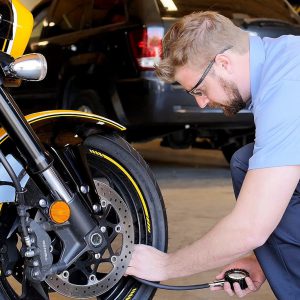
Since these are where you and the road meet, they’re probably the most important things to look over. A problem can affect handling—sometimes severely.
Are your rims free of dings? Are your spokes tight and straight? Check pressures in both tires. Since most manufacturers specify pressures for cold tires, this is the only accurate way to check them, as they heat up quickly on the road, raising the pressure. Consult your owner’s manual or call your tire manufacturer’s hotline for the proper pressures for your particular bike.
If you own multiple bikes, it may be difficult to remember all those different tire specs. And since this is one of those critical things you should check often, you may want to make a small card—like our list—with each tire’s recommended pressure, then hang it on your garage wall, or anywhere that’s handy.
While you’re down there checking the tires, make sure you’ve got plenty of tread. You should have more than 1/16 of an inch, about the distance between Lincoln’s head and the top of a penny. Remove foreign objects that may have lodged in the treads, and make sure there aren’t any cuts in the tire. A scuff is nothing to be worried about, but if it’s a deep scratch, you might want to have it checked.
Controls and Cables
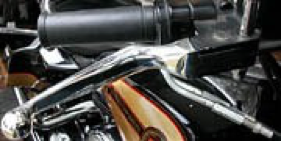 A snapped throttle or clutch cable can leave you on the side of the road, so check ’em. Operate anything connected to a cable and make sure that levers and cables feel smooth and don’t bind. Apply the front brake and push the bike forward. The brake should feel firm, and the front wheel should not move. Check the rear brake in the same fashion.
A snapped throttle or clutch cable can leave you on the side of the road, so check ’em. Operate anything connected to a cable and make sure that levers and cables feel smooth and don’t bind. Apply the front brake and push the bike forward. The brake should feel firm, and the front wheel should not move. Check the rear brake in the same fashion.
Lights
Seeing and being seen are two great ways to avoid unwanted incidents on the road, so making sure your lights work is key.
Start by turning on your ignition. Are the headlight’s high beam and low beam working? Does the taillight come on? Does the brake light come on when you depress the brake pedal and lever? Check left and right turn signals, front and rear. Remember that the cause of a malfunction here could be a relay or bulb.
Lastly, don’t forget to check your horn.
Oil and Fuel
Running out of gas is a bummer, but since many motorcycles don’t have gas gauges, it’s a very real possibility. Check the gas level in the tank, and be sure your fuel petcock isn’t on “reserve,” which could leave you with a nasty surprise if you roll to a stop thinking you’ve still got gas in reserve. And don’t forget to reset the tripmeter every time you fill up.
Running out of gas can be inconvenient, but running out of oil can turn your bike into an inert display of public art. Even some new bikes can use enough oil to be down a quart between oil changes, so check it before every ride.
Chassis
Though an improperly adjusted suspension may not seem critical, imagine your surprise as your bike behaves differently in the middle of a curve because you forgot to reset it after picking up your friend last night.
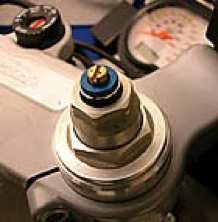
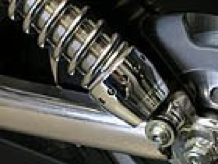 Sit on the bike and rock it, making sure that everything moves smoothly and relatively slowly. If the front or rear end behaves like a pogo stick, a trip to your trusty mechanic should be in your immediate future.
Sit on the bike and rock it, making sure that everything moves smoothly and relatively slowly. If the front or rear end behaves like a pogo stick, a trip to your trusty mechanic should be in your immediate future.
If you have an adjustable suspension, remember to read your owner’s manual and adjust it properly for the load you’ll be carrying and the type of riding you’ll be doing.
Kickstand and Centerstand
The kickstand is a handy little item—it’s what keeps your motorcycle off the ground. Make sure it’s not cracked or bent. Check the spring or springs. Are they in place, and do they have enough tension to keep the kickstand safely up?
Don’t forget to look at the engine cut-out switch or pad, if so equipped.
If everything’s in place and operating properly you’re done, and you’re good to go. Enjoy the day.
© 2003, American Motorcyclist Association
